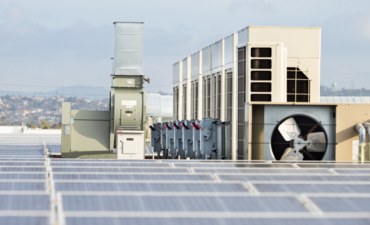
Stemming from the COVID-19 pandemic, the federal government has approved different acts to provide funding for multiple entities. For immediate pandemic-related funding needs, cities were only allocated a small portion of the funds from the initial Coronavirus Aid, Relief, and Economic Security (CARES) Act. However, unlike with the CARES Act, the recently approved American Rescue Plan (ARP) Act is an enormous and historic number of funds for local government. From this act, cities and counties will finally receive the financial resources they need to rebuild from the COVID-19 pandemic and resulting economic downturn.
With funding secured, local entities can stabilize their constituencies, strategize to invest in future infrastructure, and position themselves for a successful recovery from the devastation of the past eighteen months.
What is the American Rescue Plan (ARP) Act?
The $1.9 trillion of federal COVID-19 relief in the ARP Act has over $360 billion earmarked for "Coronavirus State and Local Fiscal Recovery Funds" to help mitigate the financial impact of the pandemic. The funds can be used in a myriad of ways including addressing urgent COVID-19 measures, replacing lost revenue, and a portion can be used to make necessary water, sewer, and broadband infrastructure improvements.
These funds will be deployed to state and local governments in two tranches: the first within 60 days and the second a year after that initial allotment. While the money is coming in two tranches over the next year, it is not required to spend either tranche right away. Specifically, state and local governments need to obligate the ARP funds by December 31, 2024 and expend these funds by the end of 2026. One exception to this deployment schedule are states with unemployment rates 2 percent greater than pre-pandemic rates. These states will receive funds in only one tranche.
The immediate decisions that will be made in the next month and for the rest of the year regarding the second round of funding are crucial
For many, the allocation of state and local funds from the ARP Act is the greatest positive economic event to hit their budgets in years. Consequently, cities and counties are rushing to determine how best to utilize the funds. The immediate decisions that will be made in the next month and for the rest of the year regarding the second round of funding are crucial — it will determine whether a city or county employs a strategy to get an instant, but short-term stimulus bump or forge a new long-term path of wide-ranging economic growth.
The dilemma: spend or invest?
The ARP Act provides state and local governments with the resources to stabilize their operating budgets. When the economic downturn stressed tax revenues, city governments endured substantial pandemic-related costs. To deal with the catastrophe at hand, many cities reduced critical services or cut back on agencies delivering essential social programs.
In addition to directing funds to renew government services, the ARP Act allows cities to invest in its infrastructure, bridging the gap between putting money back into essential services and planning for a successful future. The funding's magnitude and flexibility suggest that local governments should be strategic in deploying any ARP Act funds that extend beyond basic budget stabilization.
By investing in water, wastewater, and broadband infrastructure, cities and counties have flexibility to decide how best to use this funding to meet the needs of their communities.
The current Interim Rule aligns eligible water and wastewater projects with those that are eligible to receive financial assistance from the Environmental Protection Agency's (EPA) Clean Water State Revolving Fund (CWSRF) and Drinking Water State Revolving Fund (DWSRF).
Eligible clean water & drinking water state revolving funds
Clean water state revolving fund
- Perform projects to construct, improve, and repair wastewater treatment plants
- Control non-point sources of pollution
- Improve resilience of infrastructure in anticipation of severe weather events
- Create green infrastructure
- Protect waterbodies from pollution
Drinking water state revolving fund
- Assist communities in making water infrastructure capital improvements, including the installation and replacement of failing treatment and distribution systems
Leveraging funds for infrastructure & modernization strategies
Additionally, the Interim Final Rules (IFR) published in May 2021 state: "ventilation improvements in congregate settings, healthcare settings, or other key locations…[and] capital investments in public facilities to meet pandemic operational needs, such as physical plant improvements to public hospitals and health clinics or adaptions to public buildings to implement COVID-19 mitigation tactics" can be invested in using ARP funds.
Ideally, ARP Act investments can boost strategies already in progress around infrastructure and modernization, influencing what complementary actions may act as force multipliers. For example, the Federal Energy Management Program (FEMP) had concluded that every dollar of available funding invested yields four dollars in tangible upgrades when combined in an Energy Savings Performance Contract (ESPC).
Cities and counties should realize that many of the actions they take to address the pandemic will result in increased energy costs.
These increased energy costs will persist beyond the one-time ARP Act funding. Therefore, they should be addressed simultaneously with the upgrades. However, the American Rescue Plan Act presents an unprecedented opportunity to revitalize local economies, improve disadvantaged communities, and help each state recover faster and stronger than ever before.
Additional resources
For a further breakdown of stimulus funding and wastewater project guidance, watch our on-demand webinar – American Rescue Plan Act: Treasury Guidance for State & Local Government here.
Business Development Manager
As Business Development Manager, Roxanne Fong leads our growth strategy for the utilities sector by developing partnerships to deliver energy and infrastructure solutions and services. Her previous experience leading the new revenue development business development team for Pacific Gas & Electric (PG&E) led to the implementation of over $300 million in design-build energy projects.



